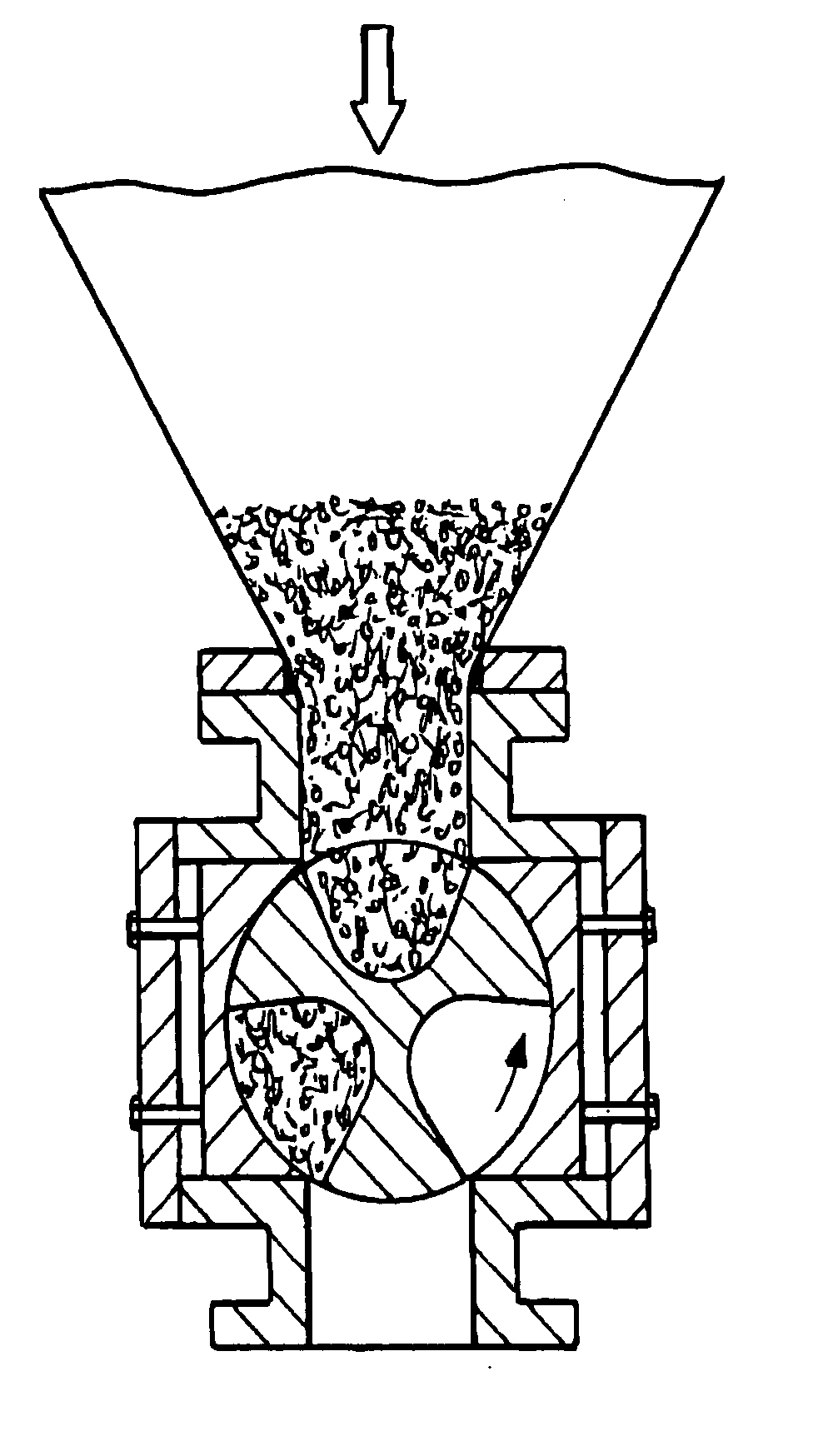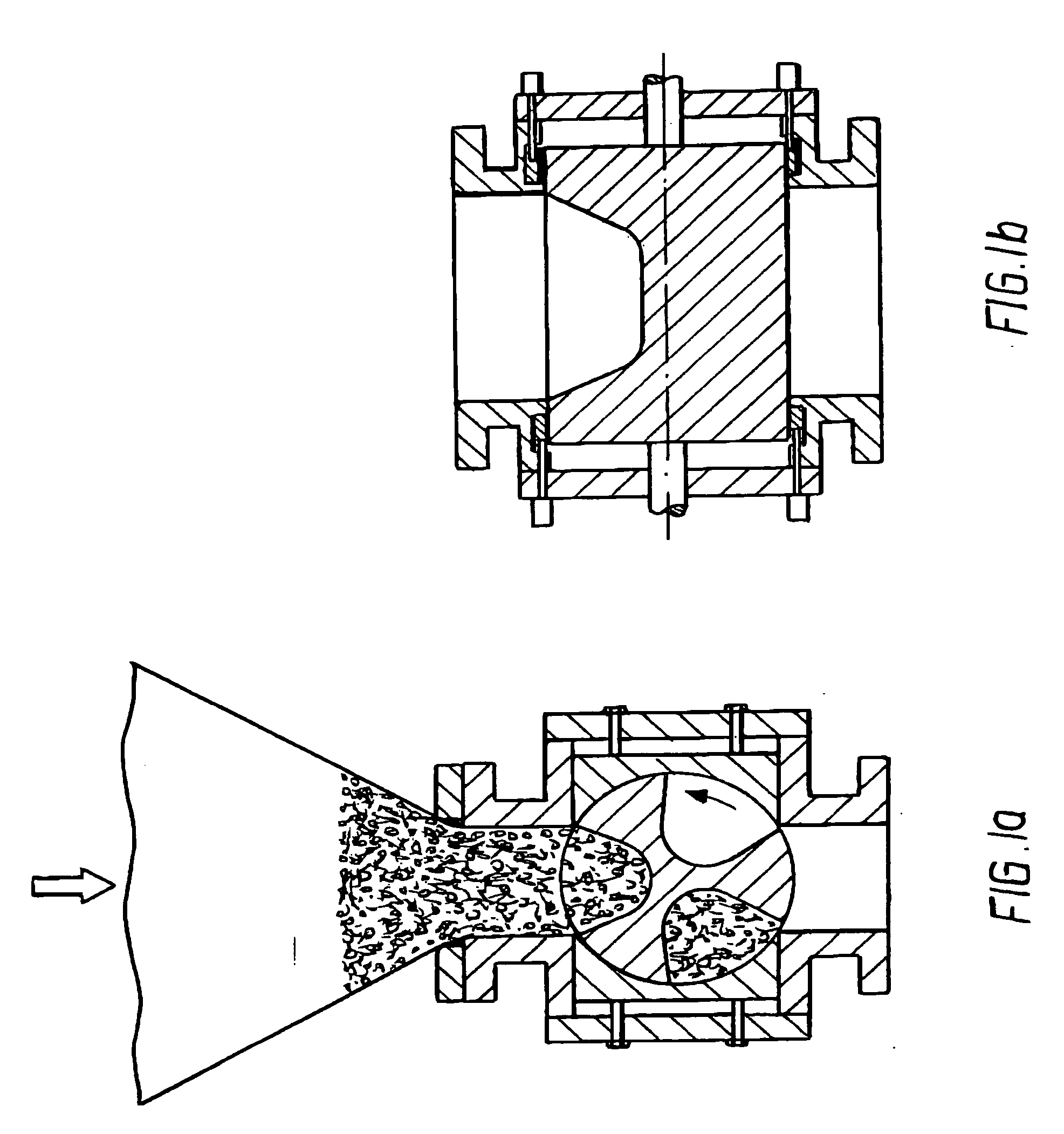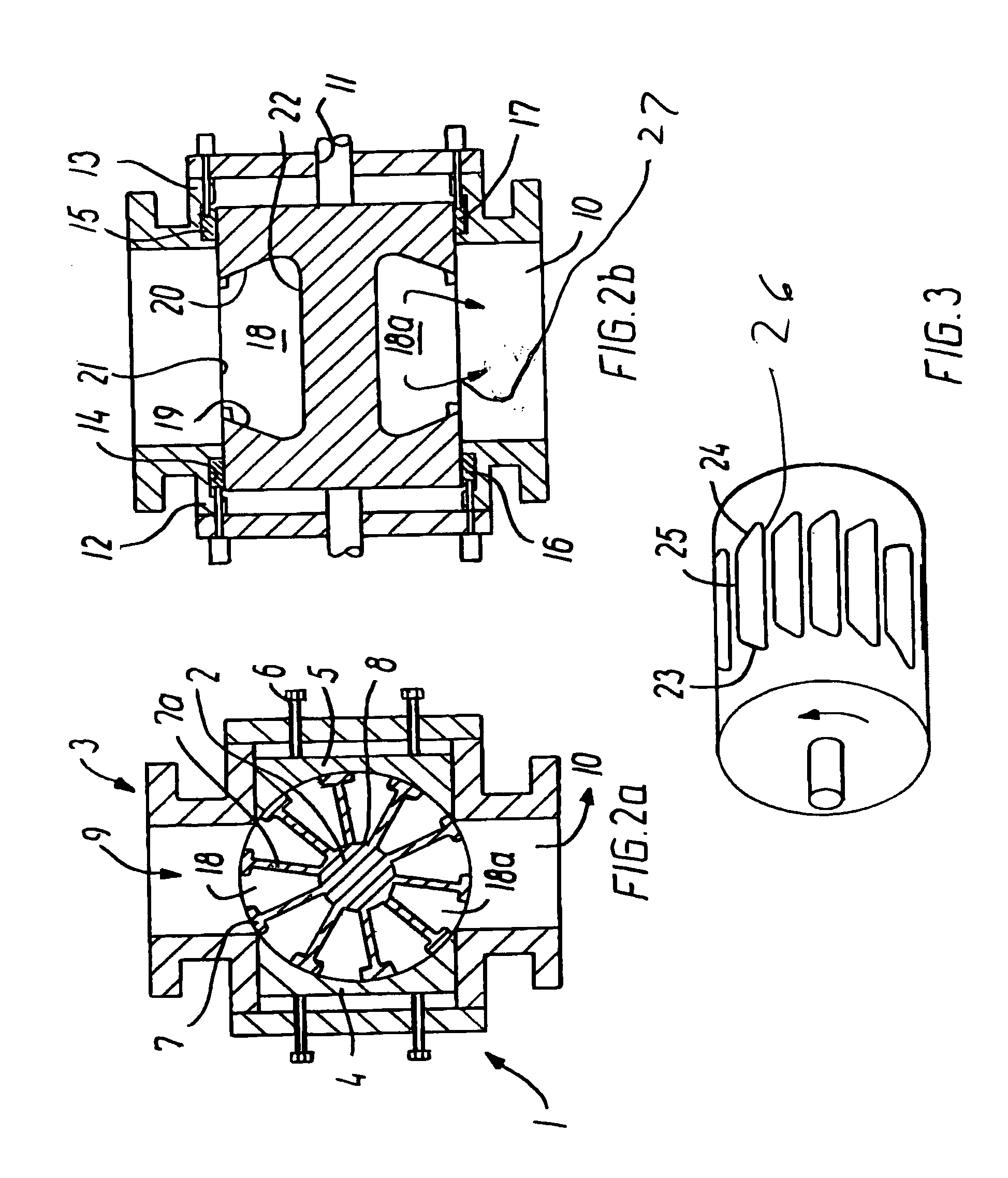Rotary airlock valve
a technology of airlock valve and sealing surface, which is applied in the direction of measuring device, loading/unloading, instruments, etc., can solve the problems of sealing surface wear, gas leakage outside the housing, and rotary airlock valves, and achieve the effect of reducing wear characteristics
- Summary
- Abstract
- Description
- Claims
- Application Information
AI Technical Summary
Benefits of technology
Problems solved by technology
Method used
Image
Examples
Embodiment Construction
[0021] Referring to FIG. 2a, a rotary airlock valve 1 has a rotor 2 disposed in a housing 3 having a pair of movable cylindrical sealing walls 4 and 5. These are adjusted by screws 6 to assure a positive seal with vanes 7 that extend from a hub 8 of the rotor. The housing has an inlet opening 9 and an outlet opening 10. Referring to FIG. 2b, the rotor is mounted to a shaft 11, driven for rotation by a motor (not shown). The housing has a side sections 12 and 13, each having a circumference groove 14 and 15 that receive a sealing material or gasket 16 and 17 therein. The sealing material may be a gasket, a compressible packing, or any other conventional seal commonly used to seal such rotating parts.
[0022] In FIG. 2b, a material receiving pocket 18 is shown adjacent the inlet opening for receiving a solid material therein. The pocket shape is defined by the adjacent vanes, 7 and 7a, and has converging side walls 19 and 20 such that the pocket opening 21 is of smaller cross-section t...
PUM
 Login to View More
Login to View More Abstract
Description
Claims
Application Information
 Login to View More
Login to View More - R&D
- Intellectual Property
- Life Sciences
- Materials
- Tech Scout
- Unparalleled Data Quality
- Higher Quality Content
- 60% Fewer Hallucinations
Browse by: Latest US Patents, China's latest patents, Technical Efficacy Thesaurus, Application Domain, Technology Topic, Popular Technical Reports.
© 2025 PatSnap. All rights reserved.Legal|Privacy policy|Modern Slavery Act Transparency Statement|Sitemap|About US| Contact US: help@patsnap.com



